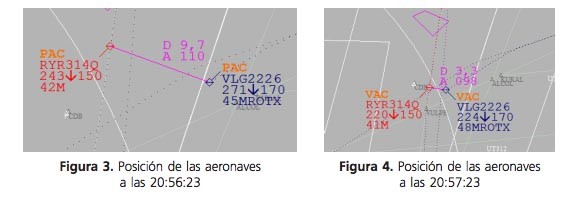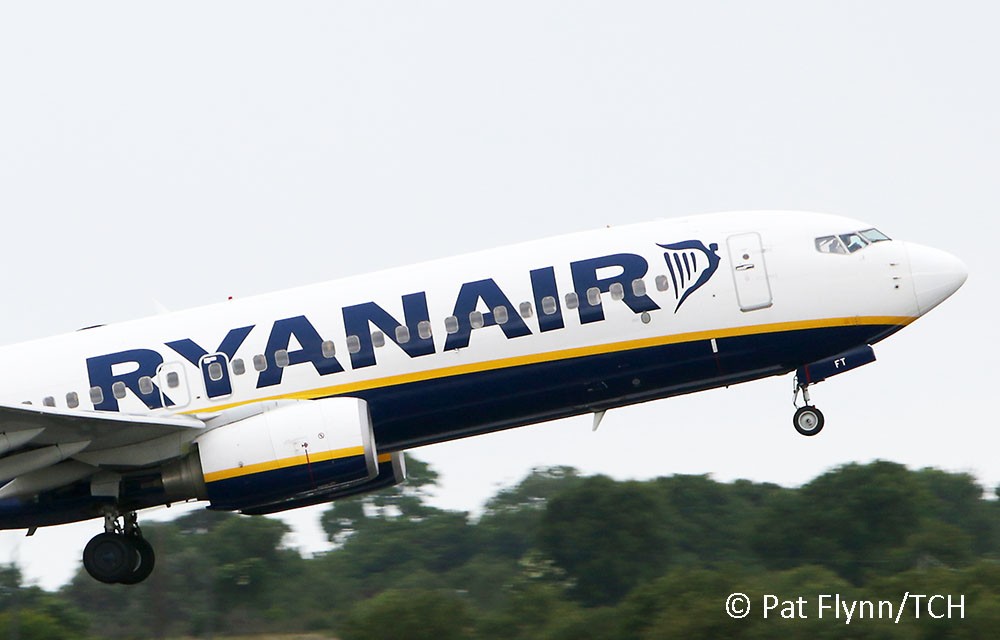
An investigation into an incident where a passenger jet flew too close to a Ryanair flight from Shannon to Malaga has determined this occurred because the other crew did not follow air traffic control instructions.
The serious ‘loss of separation’ incident resulted in the two jet’s coming within 100 feet of each other vertically and 1.4 nautical miles (2.6 kilometres) laterally when they should have been considerably further apart.
Spain’s Comisión de Investigación de Accidentes e Incidentes de Aviación Civil (CIAIAC) launched an investigation into the incident which occurred near Seville, Spain on October 30th 2014. The CIAIAC has now issued a report.
Ryanair flight FR-2848 was en route Shannon to Malaga with 36 passengers and 7 crew on board. While on approach to Malaga, the crew had been cleared to descend to 15,000 feet at a rate of 2000 feet per minute or more.
Meanwhile, a Vueling flight from Barcelona to Seville, with 153 passengers and 6 crew, was descending towards Seville after being cleared to an altitude of 17,000 feet at a rate of 2000 feet per minute or less.

The planes routes intersected south west of Cordoba however, while both aircraft were descending through 22,000 feet, the minimum required separation between the jet’s was lost.
Spain’s CIAIAC has confirmed: “The two aircraft were descending through FL220 (22000 ft) when the separation between the aircraft reduced to 100 feet (30.4 metres) vertically and 1.4 nautical miles (2.6 kilometres) laterally.”

Both jet’s Traffic Collision Avoidance Systems (TCAS) alerted the crews to the imminent danger and issued automatic resolution advisories (RA) to each crew.
The CIAIAC investigation concluded that the incident occurred because the crew of Veuling flight failed to follow the descent instructions given to them by air traffic control.
The Vueling crew had been instructed to maintain a rate of descent of 2000 feet per minute or less however, they increased the rate which resulted a conflict with the Ryanair jet on a converging path.
The controller had instructed the Veuling crew to proceed direct to a particular waypoint advising them that speed restrictions were still in effect. The last part of the transmission was not read back nor did the controller require a read back from the crew.
The controller subsequently cleared the aircraft to descend to another flight level but didn’t mention that the restriction on the rate of descent remained in effect. This led the crew to mistakenly selecting a higher rate of descent.

The probe also established that the controller did not have a display of the rate of descents available on his screen and so, remained unaware that the Veuling crew hadn’t complied with the restrictions on vertical speed
The incident was aggravated by several other factors according to the CIAIAC.
The crew of Veuling flight 2226 did not obey their TCAS (Traffic Collisions Avoidance System) resolution advisory and increased their rate of descent instead of reducing it as required. These actions brought them into conflict with the Ryanair flight.
“It was not possible to determine whether this was an incorrect crew response or whether it was a fault in the VSI system displaying the TCAS indications,” according to the report.
The investigation was unable to determine whether crew fatigue played a part in the incident.
Previous report from January 30th 2015.
